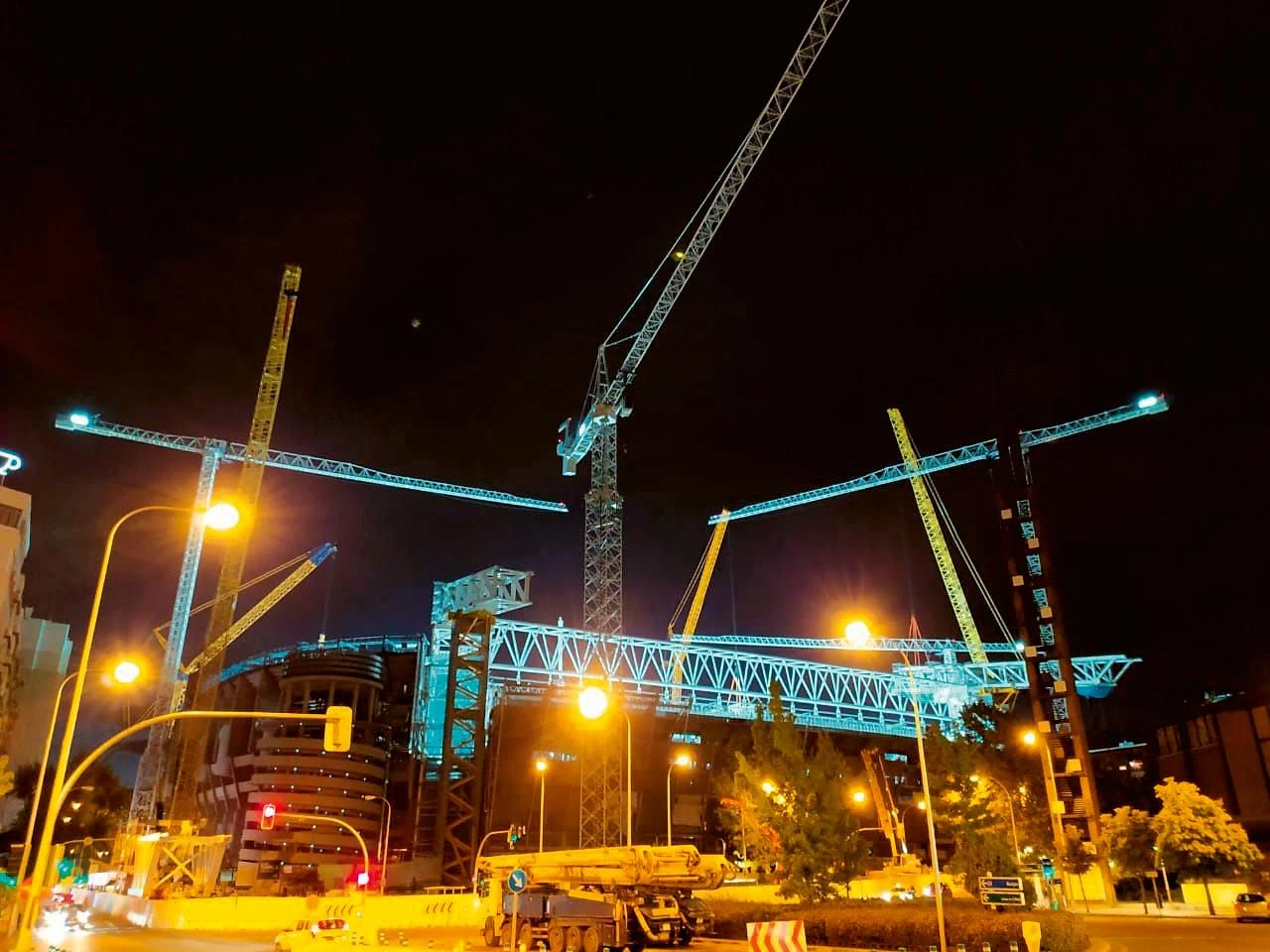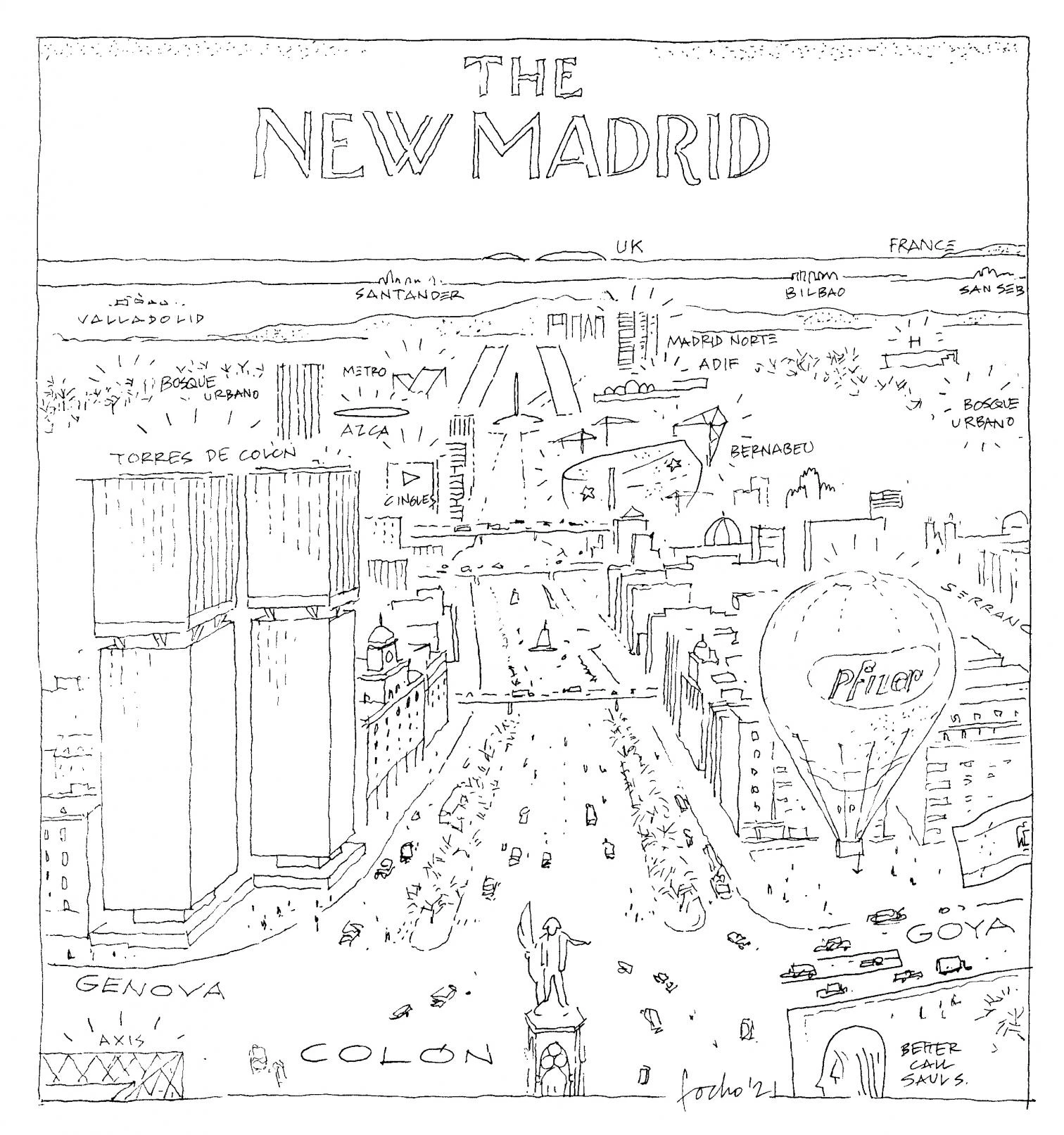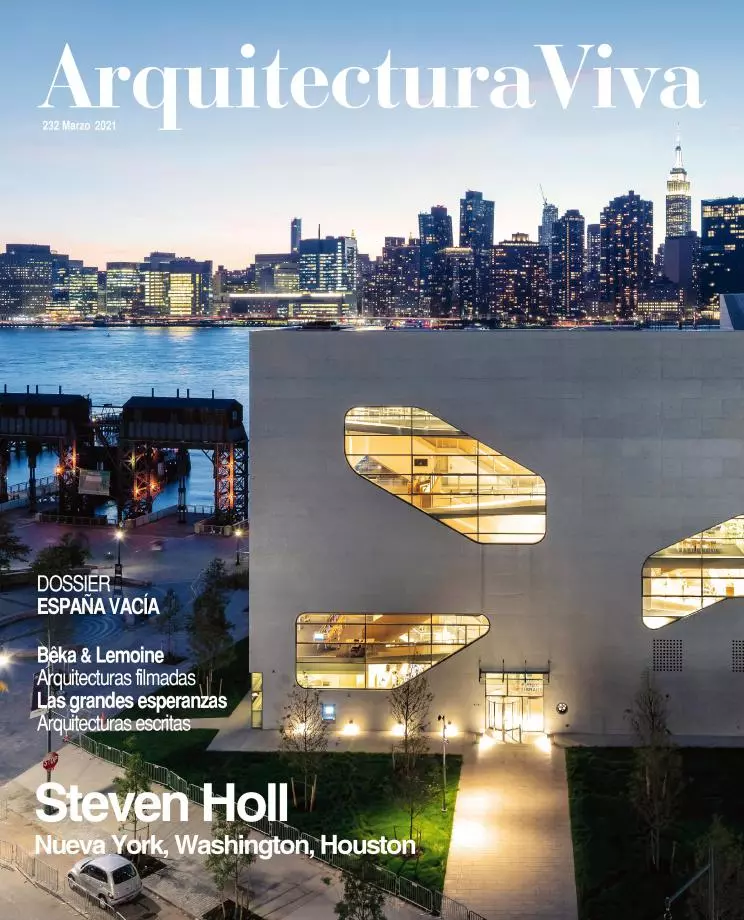
The Paseo de la Castellana reflects both the fortes and the flaws of Madrid. The strengths of an urban axis that has efficiently provided a backbone for the growth of the city, prioritizing the pragmatic over the iconic and infrastructures over buildings. And the faults of an avenue which, precisely because of its infrastructural focus, has suffered from a symbolic anomie. The Castellana has been the great strip on which one is forever in motion, but which craves for character and monumentality and still clamors to be a fragment of the ‘analog city.’
The Castellana is the avenue of frustrated icons. It features edifices as emblematic as Zuazo’s Nuevos Ministerios government buildings, Moneo’s Bankinter headquarters, or Sáenz de Oíza’s Banco de Bilbao, but these landmarks are the exception amid a pleiad of monumental fiascos, from the Kio Towers or the Five Skyscrapers to the Torres de Colón, the transformation of which arouses expectation and skepticism in equal amounts.
The new Bernabéu Stadium may be the best candidate for global iconhood, but its impact will be limited, so Madrid in coming years, true to its tradition, will evolve less through buildings than through infrastructures: the redevelopment of AZCA, on the Castellana, reviving a failed Manhattanism project; Operation Chamartín, at the far end of the Castellana, marking the urban footprint of the next 100 years; and the Metropolitan Forest, beyond the Castellana, to create a sustainable green belt for a city forever in motion.






